Jack Dorsey’s Web5 is a competitor to Web3’s vision of the internet. It’s no secret that the former Twitter CEO is no fan of Web3 as he’s not been shy about making his opinions known. From Dorsey’s perspective, Web3 is every bit as problematic as Web2.
Web3 keeps data and content on blockchains. It is a blockchain-driven, decentralized, censorship-resistant, privacy-focused vision of the future. In a way, it’s a return to the philosophy of Web1, but with elevated technology. Web1 was the phase of the internet that existed before tech giants like Google, Facebook, and Twitter moved in to consolidate power, censor information flows, and hawk users’ data.
But Dorsey sees Web3 as a utopian fantasy that will never materialize. Furthermore, he thinks those who believe in the utopian vision of Web3 are delusionary. “You don’t own Web3,” he tweeted. “The VCs and their LPs do. It will never escape their incentives. It’s ultimately a centralized entity with a different label. Know what you’re getting into….”
To clarify the tweet, VCs are venture capitalists, and LPs are limited partners who invest their money with VCs. Moreover, Dorsey’s comments were directed at VC firms like Andreessen Horowitz, aka “a16z.” They are not only heavily invested in Web3 projects but also actively promote the concept.
If you need clarification on the difference between Web2 and Web3, check out our article on the Moralis blog. If you’re new to crypto, take the Crypto for Beginners course at Moralis Academy!
Jack Dorsey’s Web5 and Web3 Critiques
So, what is Web5? To contrast it, let’s first continue with Dorsey’s critical missives about Web3. Even Elon Musk couldn’t help piling in by tweeting, “I can’t even find Web3.” Dorsey replied, “it’s somewhere between a and z.” This tweet was aimed at a16z and naturally elicited a response from the target. More specifically, a former a16z partner.
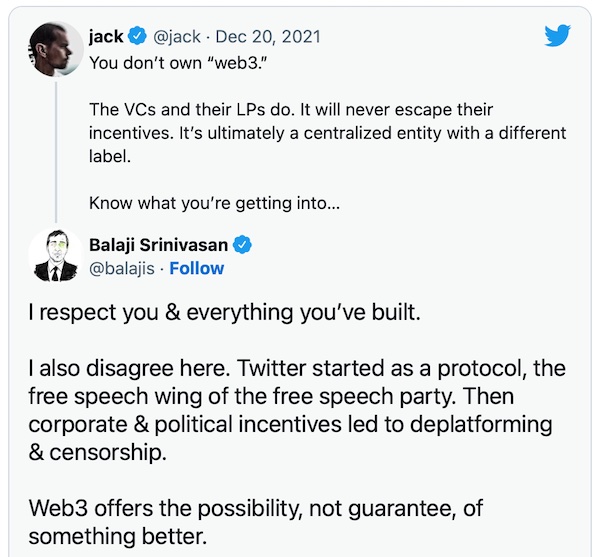
He replied that Dorsey was wrong about Web3 while pointing out how Twitter strayed far off from its original libertarian roots and surrendered free speech for censorship and the choice to bow to corporate interests. His point was that Twitter had derailed, and Web3 offered the possibility of something far better.
The back-and-forth banter turned into the typical Twitter battle as Dorsey replied, “All false.” His story version was that Twitter had always bowed to corporate incentives from the get-go. Further, he said Web3 is beholden to the same corporate incentives. They just conveniently mask it with the term “decentralization.”
That comment prompted Chris Dixon, a present a16z partner, to reply that he believed Dorsey would eventually come around to appreciate Ethereum and Web3. His tweet read, “BTC is great as digital gold, but there are other important applications that require other chains.”
In sum, the tweet battle illuminated how badly Jack Dorsey wants to ditch Ethereum and Web3 and focus on his favorite blockchain, Bitcoin. He believes it to be the more realistic alternative and is willing to put his creative and financial muscle behind it.
Jack Dorsey’s Web5 is one competitor to Ethereum, but Solana is another. Learn about Solana vs. Ethereum in our recent blog post. If you need more info on Solana, check out the Rust & Solana article at Moralis Academy.
TBD and Jack Dorsey’s Web5
To be clear, Square was the name of the popular payment processing system that had become synonymous with its seller business. But as the company grew, Square Inc. changed to Block to better represent its ecosystem of many united companies.
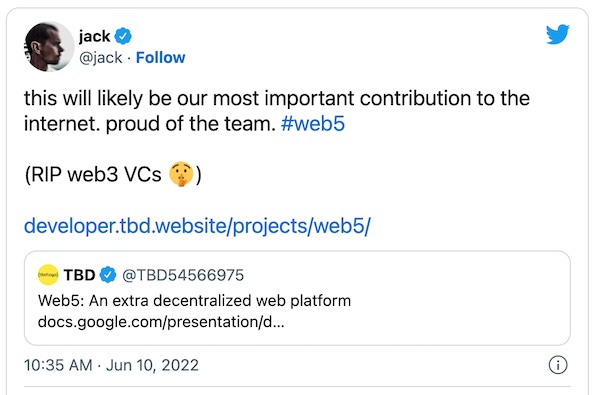
So, what is Web5, and what does TBD have to do with it? To sum up, Dorsey’s TBD is a subsidiary company within Block, previously known as Square. More importantly, TBD’s decentralized vision for the internet is called “Web5.”
Moreover, TBD recently explained its sales pitch for Web5 in a problem-solution scenario. In the Web2 phase of the internet, personal data became the property of third parties, ala the big tech firms. Web3 seeks to remedy this with the blockchain, decentralization, and tokenization. Web5, on the other hand, provides the solution by bringing data storage and decentralized identity to an individual’s applications.
So, Dorsey and his team are designing their decentralized version of the web to give control of personal data back to users by ditching Web3 and leveraging Bitcoin.
Jack Dorsey may not believe in Web3, but a whole ecosystem is building around it, with devs creating a multitude of dapps. You can check out the dapp development tutorial at Moralis.io.
What is Web5?
When asking the question, what is Web5? Firstly, the Web5 moniker is a play on the name Web3. Web5 surfboards off the nomenclature because Web3 is already a familiar term of endearment in the blockchain community. However, in TBD’s opinion, Web5 is “two better” as in Web3 + 2 = Web5.
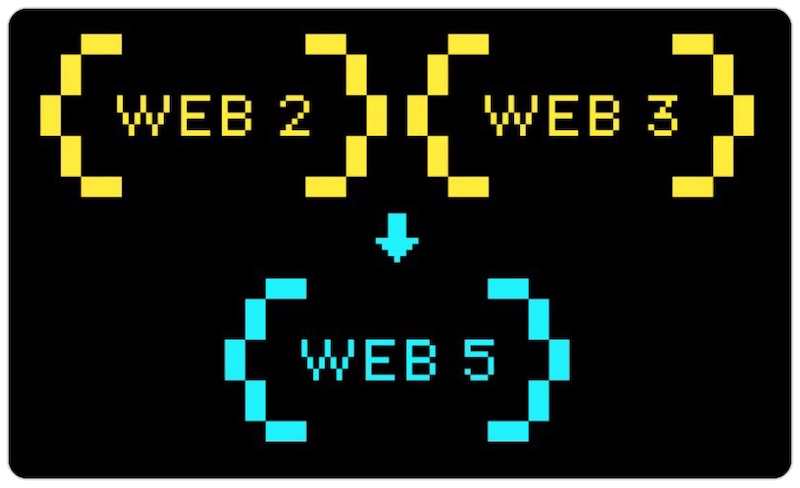
Jack Dorsey’s Web5 starts with the notion that the Web3 contenders for a decentralized internet are going about it wrong. While Web3 wants to tokenize and create composability and interoperability between many blockchains, Web5 only uses one blockchain—and that is Bitcoin. Further, since Dorsey believes blockchains are not efficient for everything, Web5 is developing only one use case: identity.
In Jack Dorsey’s Web5, the goal is for developers to focus on UX while giving identity and data ownership back to the individual. So, what is Web5? The short answer is that it’s a different approach to Web3 utilizing one blockchain with a single-use case.
This latest bear market is tough, and it’s hard to tell how long it will last. That’s why now is an excellent time to learn how to invest during a crypto bear market. Furthermore, why not take a macro view in understanding crypto crashes and comprehend how they happen in the first place.
What is Web5 and its Advantages?
Mike Brock, the TBD lead, believes that Web5 beats out the presiding models by removing their blockchain-centric bias and focusing on identity and a censorship-free experience.
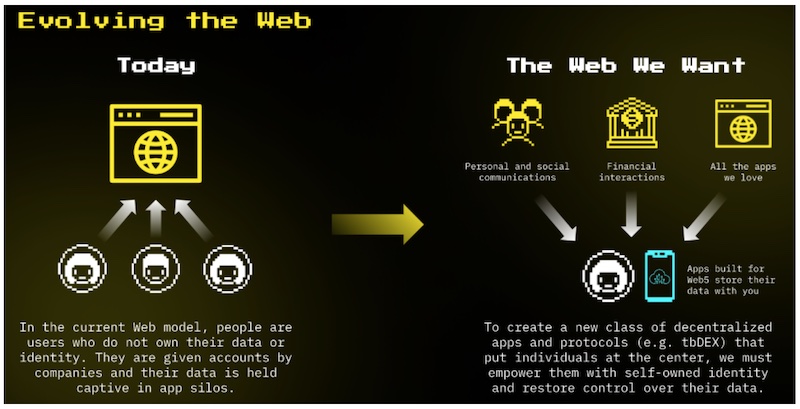
The lead developer and team at TBD are challenging many of the status quo assumptions about achieving a decentralized internet. What is Web5? You won’t be able to understand it without understanding the Bitcoin blockchain fully. The best way to do that is by taking the Blockchain & Bitcoin Fundamentals course at Moralis Academy.
Web2 + Web3 = Web5
Jack Dorsey’s Web5 monetary layer will build on top of Bitcoin. However, Web5 will also be borrowing from other technologies across the spectrum of computer science and cryptography to cobble together Dorsey’s vision.
So, what is Web5, and what are its similarities to Web3? Like Web3, Web5 promises to create a decentralized layer on the internet while allowing users to transact without third-party intermediaries.
The difference is that Web3 incorporates tokenization and blockchain technology to decentralize the web. The vision for Web5, on the other hand, is an identity-based system that only utilizes Bitcoin. It’s more concerned with giving users a decentralized identity so they can move seamlessly from one application to another without logging in.
Web5 comprises various components that enhance UX and enable decentralized identity management. Let’s look at some of the inner workings.
WEB5 Components
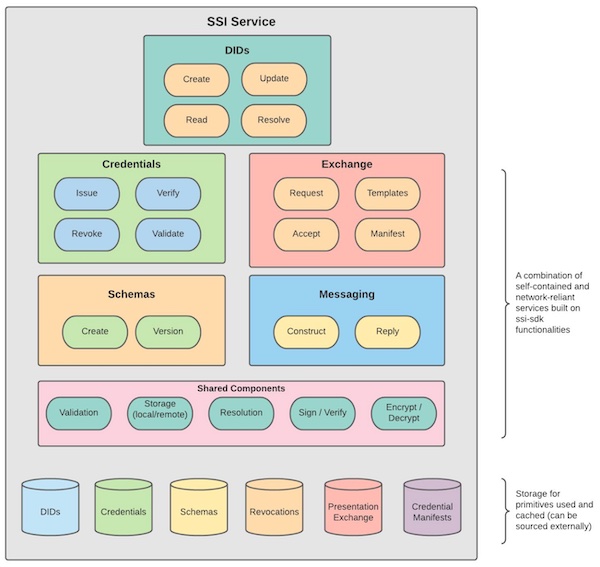
1. Decentralized Identifiers (DIDs)
DIDs enable decentralized digital identity. They are globally unique identifiers requiring no central registration authority and get generated cryptographically. DIDs use a uniform resource identifier string that serves as an ID. It will all link to a unique, user-controlled identifier on the Bitcoin blockchain.
The DID component leverages ION, a second-layer network that runs on top of the Bitcoin blockchain. It is public, permissionless, and based on the Sidetree protocol. This protocol requires no trusted validators, special tokens, or additional consensus mechanism to work.
2. ION Network
Web5 also utilizes ION, a public and permissionless DID network running on top of the Bitcoin blockchain. The ION network allows users to deactivate the DIDs, not third parties. This factor is supposed to make it censorship-resistant. In theory, ION can process thousands of DID operations per second.
3. Decentralized Web Nodes (DWNs)
A DWN is a data storage and message transmission mechanism for participants to locate data linked to a given DID. Further, the data can be private or public. DWNs enable interaction between separate entities that need to verify each other’s identity before transferring information.
4. Self-Sovereign Identity Service (SSIS)
The SSIS facilitates all things related to verifiable credentials and DID usage. This list includes requesting, creating, exchanging, verifying, validating, and revoking credentials of different degrees of complexity.
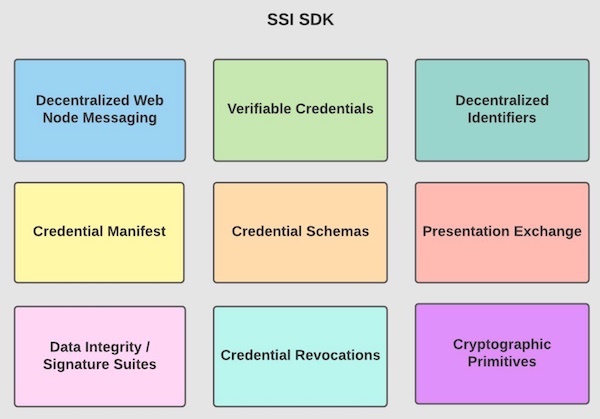
5. Self-Sovereign Identity Software Development Kit (SSI-SDK).
The SSI-SDK seeks to provide functionality based on standards for building decentralized identity apps with limited dependencies between components. It encapsulates a set of standards regarding self-sovereign identity. These standards are under active development and, therefore, subject to change.
Jack Dorsey’s Web5 is a decentralized web platform allowing developers to build decentralized apps (dapps) via DIDs and nodes. As you can see, each of the above components has some relation to user identity. The good news for developers is they are welcome to participate in Jack Dorsey’s Web5 movement. Those interested can submit pull requests and issues to the Web5 GitHub repository.
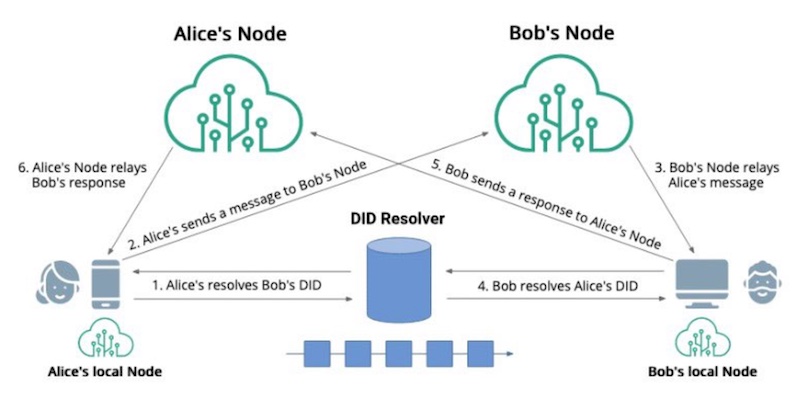
Can Web5 Succeed?
Jack Dorsey’s Web5 project will prove to be quite an undertaking. But with so many successes under his belt, he can never be counted out. When questioned about operating counter to Web3 reasoning, a common retort is that Web3 has good intentions but the wrong tools. Furthermore, Tor and BitTorrent prove that blockchain technology is unnecessary for decentralization. Instead, Dorsey and the TBD team feel that the blockchain is only suitable for mitigating the double-spend problem in peer-to-peer transactions.
By that reasoning, they only need Bitcoin to succeed. Thus, Web5 centering its monetary network around Bitcoin makes sense because Dorsey believes that one day BTC will become the native currency of the internet. So, by leveraging Bitcoin and various computer science technologies, Web5 could theoretically dominate with their new ecosystem.
Making the World a Better Place
“Making the world a better place” was sufficiently satirized in multiple episodes of “Silicon Valley” as high-tech billionaires sought to purvey socially acceptable rationales to cover their drives for greed and power. However, let’s not be too cynical. Billionaires can have altruistic motives.

Some believe Dorsey is pursuing Web5 because he thinks Web3 will never achieve decentralization, which is his top concern. Others on the Ethereum side are naturally skeptical that a Web2 kingpin, whose company successfully censored some high-profile ideological opponents—including a U.S. President—is now concerned about fighting centralization and censorship. So, Dorsey’s drive for decentralization might be a tough sell for Ethereans and other Web3 proponents to buy.
After all, Web3 holds the opposite values of Web2 and its behemoths like Twitter that Jack Dorsey ruled as CEO. And although Web5 is positioning itself as the best way for users to control their data, one can’t help but wonder if that’s the only motive. Reducing the world’s cryptocurrencies to one and then controlling the layer on top of it that houses everyone’s identity sounds like a control freak’s dream. If a backdoor is in place on the Web5 layer, it could lead to all sorts of dystopian scenarios.
What is Web5? Summary
It’s one thing to have the power to kick ideological opponents off your social media platform. It’s quite another to be able to target the identities of undesirables and ban them from participating in the world’s economy. But putting motives aside, does the future belong to Web5 or Web3? Although there is no official release date, TBD hopes to finish Web5 Version 1 by July 1, 2022, which is not far off. All that’s left to say is, may the best team win.
Now is your time to win! Enroll in the Moralis Academy today and learn how to become a blockchain developer. This bear market won’t last forever, and blockchain teams like Dorsey’s are hard at work prepping for the future.




